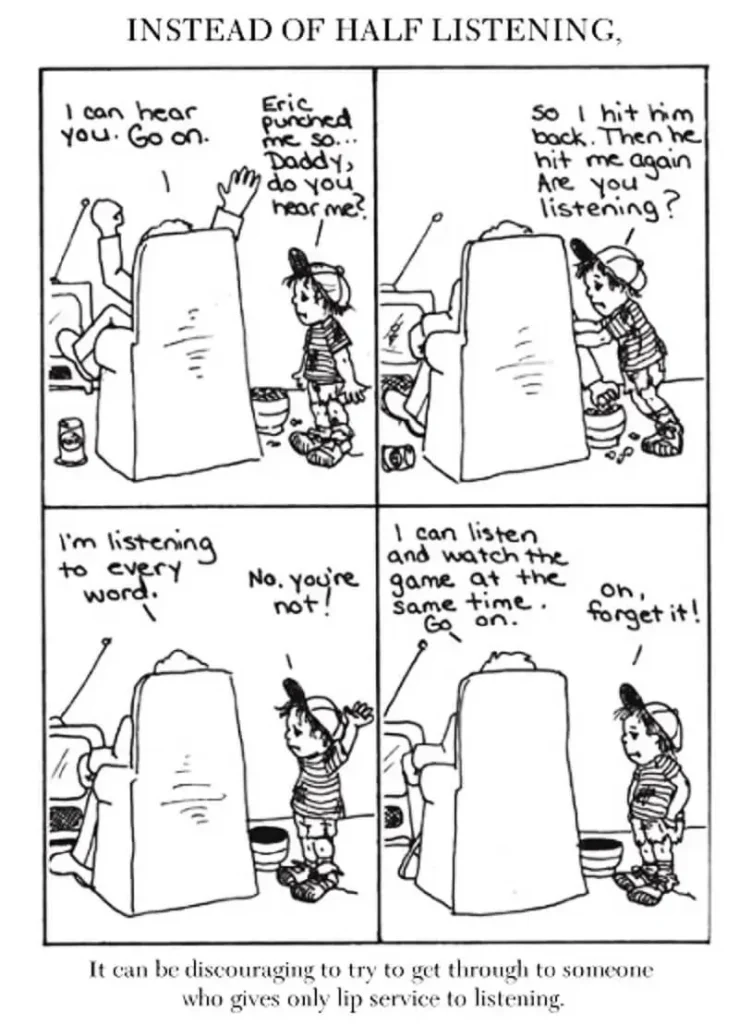Introduction
Parenting is one of the most challenging yet rewarding experiences, and communication is at the heart of building a strong parent-child relationship. Adele Faber’s book, “How to Talk So Kids Will Listen & Listen So Kids Will Talk PDF,” has been a groundbreaking guide for parents seeking to improve communication with their children. It offers practical strategies to encourage open dialogue, resolve conflicts, and foster mutual respect. But what makes this book a timeless classic in parenting? Let’s dive into the key takeaways and learn how it can transform your relationship with your children.
| Name of PDF | How to Talk So Kids Will Listen & Listen So Kids Will Talk PDF |
|---|---|
| No Pages | 319 |
| Author | Adele Faber, Elaine Mazlish |
| Published | 1980 |
| Language | English |
| Genres | Self-help book |
| Size | 3.7 MB |
| Chek, latest edition |
Table of Contents

Who Is Adele Faber?
Adele Faber is an expert in communication and parenting, having co-authored several books aimed at helping parents connect with their children. With a background in education and child psychology, Faber provides parents with practical tools that are both relatable and actionable. Her work has helped millions of parents worldwide build stronger, more empathetic relationships with their kids.
Why Communication Is Key in Parenting
Effective communication is the foundation of any healthy relationship, and this is especially true in parenting. When you know how to communicate well, your child feels understood and valued. This sense of connection fosters trust and cooperation, making everyday interactions smoother. By mastering the art of communication, parents can guide their children through challenges, support their emotional development, and nurture a respectful, loving home environment.
The Central Idea of the Book
The central theme of “How to Talk So Kids Will Listen & Listen So Kids Will Talk” is simple: communication is a two-way street. The book emphasizes the need for parents to talk in ways that encourage kids to listen, while also listening in ways that motivate kids to talk. Faber provides real-life examples, exercises, and illustrations that demonstrate how small shifts in how we speak and listen can make a world of difference in parenting.
How to Talk So Kids Will Listen
The Power of Empathy
One of the book’s most important lessons is the power of empathy. Children, like adults, want to be heard and understood. When parents show empathy—acknowledging their child’s emotions without judgment—they create a safe space for honest communication. For instance, instead of dismissing a child’s frustration, you can say, “I can see you’re really upset about this,” which validates their feelings and opens the door for dialogue.
The Importance of Acknowledgment
Acknowledging your child’s feelings is the first step to building trust. When children feel heard, they are more likely to listen to what you have to say. Faber emphasizes the importance of using language that affirms your child’s emotions, which helps reduce defensiveness and resistance.
Common Communication Mistakes Parents Make
It’s easy to fall into communication traps, especially when juggling the demands of daily life. Common mistakes include nagging, lecturing, and invalidating a child’s feelings. These behaviors often shut down communication, leading to power struggles and frustration. Avoiding these pitfalls is essential for fostering a more open and respectful relationship with your child.
Practical Tips from the Book
Here are some practical strategies from the book that can help you communicate more effectively with your children:
- Use descriptive praise instead of general compliments.
- Set clear boundaries without being authoritarian.
- Express feelings without blaming or shaming your child.
- Offer choices to empower your child to make decisions.
These tips make it easier for parents to get their point across while also encouraging children to be more cooperative.

How to Listen So Kids Will Talk
Listening is just as important as talking, and Faber teaches parents how to listen in a way that makes children feel safe to express their thoughts and feelings.
Giving Full Attention
One of the most effective ways to listen is to give your full attention. This means putting down your phone, maintaining eye contact, and showing genuine interest in what your child has to say. Kids can sense when you’re not fully engaged, which might make them less willing to open up in the future.
Non-Verbal Communication
Non-verbal cues, like nodding or leaning in, can communicate empathy and attentiveness. Children are particularly sensitive to body language, and when your actions match your words, it reinforces trust.
The Role of Emotions in Communication
Faber’s book highlights the importance of helping children express their emotions. By giving kids the language to describe how they feel, parents can help them navigate their emotions in a healthy way. At the same time, managing your own emotions is critical. Calm communication in the face of conflict models emotional regulation for your child.
How to Handle Conflict with Kids
Conflict is inevitable in any relationship, but it doesn’t have to be destructive. Faber offers techniques for resolving conflicts calmly, such as active listening, using “I” statements, and proposing win-win solutions. These strategies help diffuse tension and encourage cooperation rather than confrontation.
Positive Reinforcement and Communication
Using positive reinforcement in communication can strengthen the bond between parent and child. Praise that is specific and genuine encourages children to feel good about themselves and their accomplishments, boosting their self-esteem. For example, instead of saying, “Good job,” you could say, “I really appreciate how hard you worked on that project!”
The Benefits of Effective Communication
When parents master the art of talking and listening, the benefits are significant. Improved communication leads to stronger relationships, less conflict, and a more peaceful home environment. Children who feel heard are more likely to be confident, independent, and empathetic individuals.
Real-Life Success Stories
Many parents who have applied Faber’s techniques report transformational changes in their relationships with their children. Stories of increased cooperation, fewer tantrums, and more meaningful conversations highlight the real-world impact of these communication strategies.
Challenges You May Face
While the techniques in the book are effective, they require patience and consistency. Some parents may struggle with unlearning old habits, but persistence is key. Over time, as these methods become second nature, communication with your child will improve.

Conclusion
Adele Faber’s “How to Talk So Kids Will Listen & Listen So Kids Will Talk” is more than just a parenting book—it’s a guide to building lasting, meaningful relationships with your children. By learning how to speak and listen in a way that fosters mutual respect and understanding, parents can transform their homes into spaces where communication thrives.
FAQs about How to Talk So Kids Will Listen & Listen So Kids Will Talk PDF
What age group is this book for?
The book is primarily aimed at parents of children ages 2-12, but its techniques can be adapted for teenagers as well.
Can the techniques in the book be used for teenagers?
Yes, many of the communication strategies are applicable to teenagers, especially those focused on active listening and empathy.
How long does it take to see results?
Results vary depending on the child and the parent’s consistency, but many see improvements within a few weeks of applying the techniques.
Is it useful for teachers or educators?
Absolutely! Teachers and educators can benefit from these communication techniques to foster better relationships with their students.
Do both parents need to read the book?
While it’s helpful for both parents to read it, one parent can still implement the strategies successfully.
How to talk so kids will listen to praise?
Giving kids specific, descriptive praise rather than a general “well done” or “good girl” = more authentic, mindful and ultimately helpful





